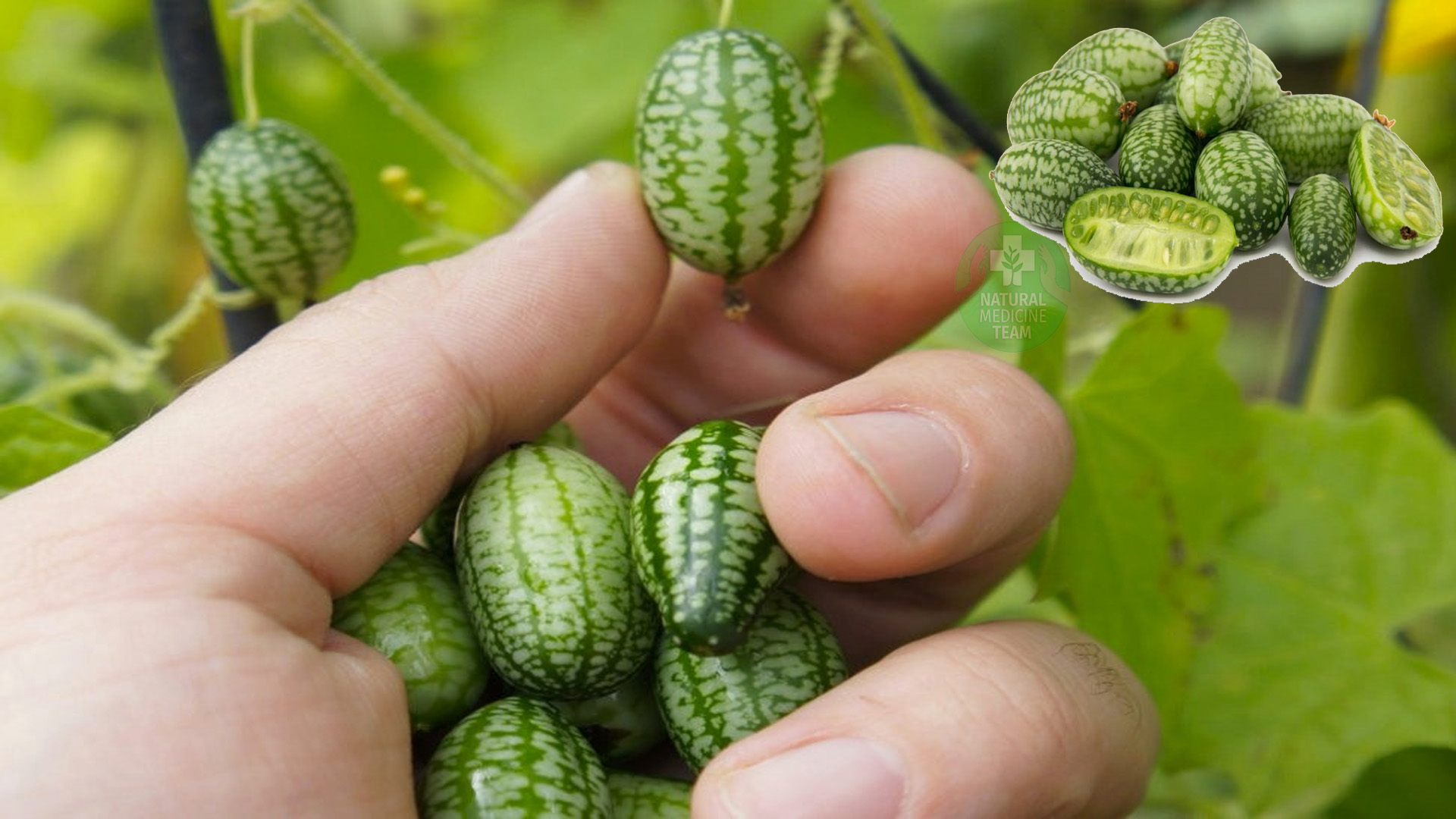Although many people have never heard of this fruit, cucamelons will rouse your curiosity, both with their name and appearance. Shaped like a mini watermelon, they’re the size of a grape, while the sour taste is a combination of cucumber and lime. They grow on a thin vine and are surrounded by ivy-like leaves. Despite its strange appearance, this is not a genetically modified plant, but a delicacy from Latin America and a common ingredient in the Mexican cuisine.

Health Benefits
Small in size, but plenty of healthy nutrients inside. Cucamelons are extremely rich in vitamins and minerals, antioxidants and fiber. This helps to lower the risks of heart disease, stroke, and cancer. It can also help to lower the bad cholesterol levels, while its phytonutrients also support proper functioning of the eyes.
Why You Should Grow Cucamelons
As they are pretty much uncommon, the chances that you can buy it from your local grocery store are quite small. So, the best thing to do is – growing them in your garden. Cucamelons are actually one of the easiest plants to grow; just like their relative, the cucumber, they can be grown pretty much anywhere.
How To Grow Your Perfect Cucamelons – Step by step
- Order your seeds – Since it’s not very easy to find them offline, the best thing to do would be to buy them online. Prices may vary, but a simple Google search may help you purchase the highest quality seeds for the best price. Offers with organic or chemical free seeds are the best to search for.
- Take notice of the climate – They have some specific requirements like warm and frost-free weather at least 65 to 75 days of the year and soil temperatures between 75 and 85 degrees Fahrenheit. It may be the best to start them indoors
- Where to plant them – They require to be exposed to sunlight at least one-quarter of the day and at least 12 inches of space for each plant
- Set up a wire cage – to support their structure and keep them off the ground
- The right type of soil – should be rich with a lot of nutritive compounds and have good soil drainage
- Watering – Once a week, wetting the top couple of inches; when it’s too hot, twice a week is recommended
- Dealing with pests – Ignored almost by all pests and birds, and also are resistant to diseases
- Harvest the fruit – The time has come when they have reached a nice plump size with the shape of a grape, and about 1 to 1.5 inches in length.
- Pruning – Actually, not a big deal. Just remove the dying leaves to allow more sunlight.
Cucamelons in Diet
Cucamelons are common ingredients in stir-fries, salsas, and salads, but you may also eat them raw or sprinkled with dried herbs. Additionally, they can be prepared with sliced olives and peppers, and a drizzle of olive oil. And just like you would pickle cucumbers, you can also pickle cucamelons, the process is easy and the result is really tasty.
